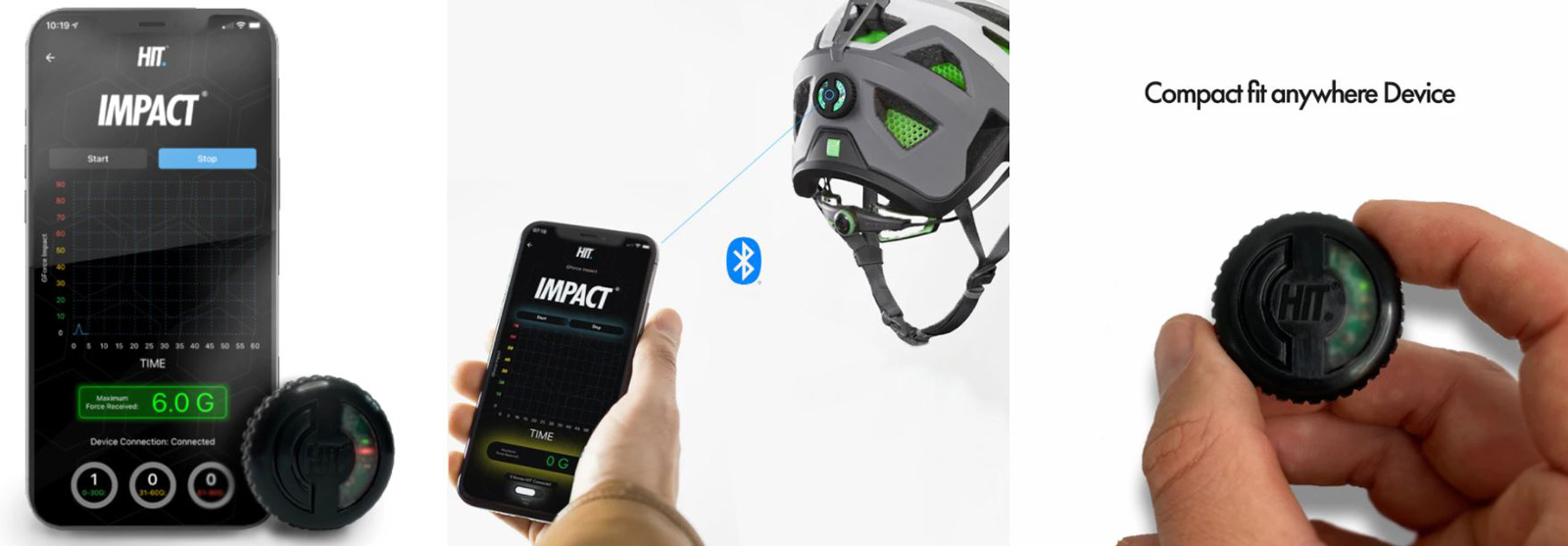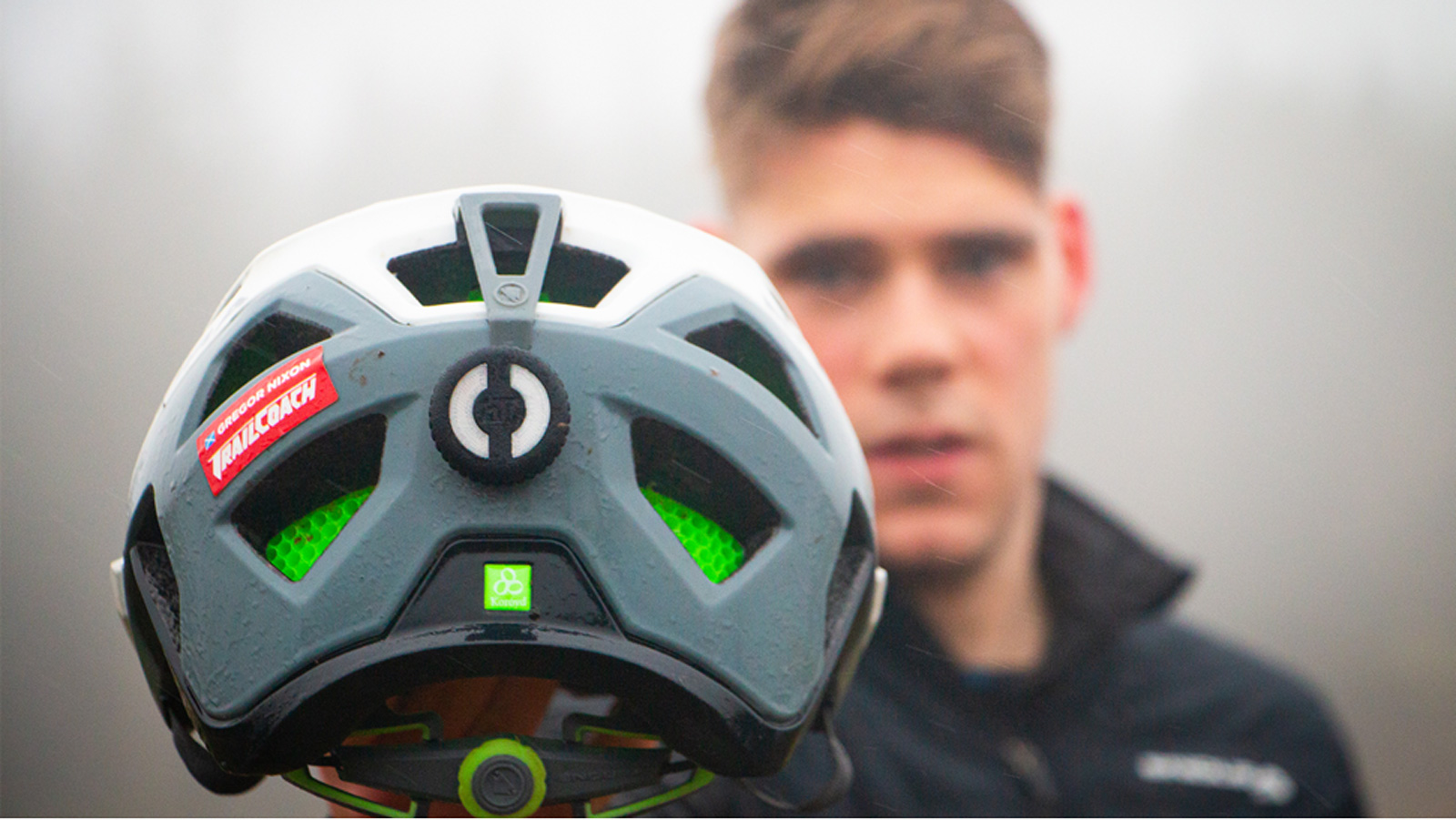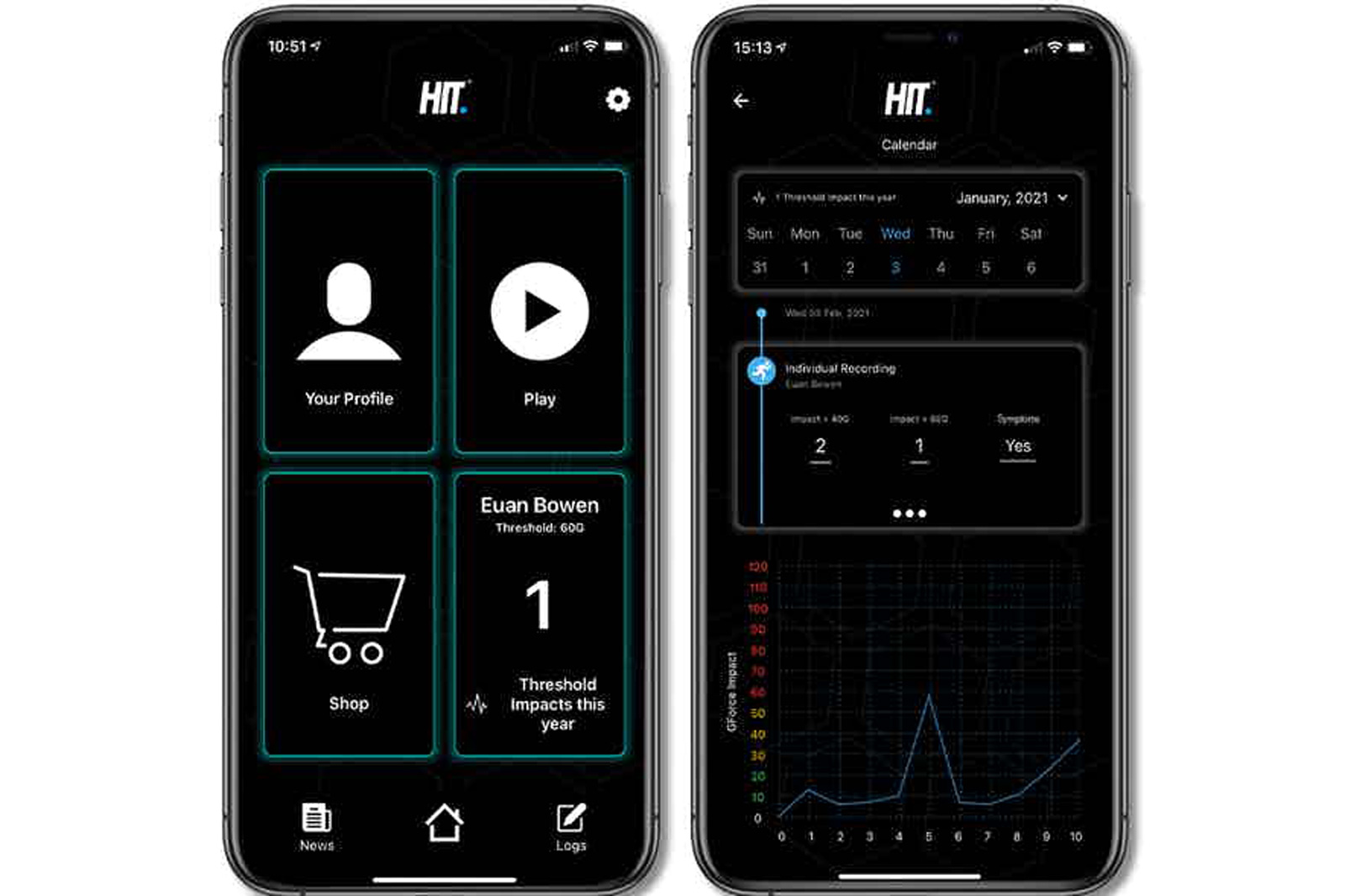Edinburgh-based HIT Recognition has released the Impact detection device designed to fit any bike helmet via an adhesive pad, measuring G-Forces to give the wearer an idea of how big a blow to the head they took during a crash. Only 10% of concussions actually result in loss of consciousness, so having a device measuring G-Force in real-time could help the wearer understand jut how bad that last knock to the head was, allowing them to decide whether or not they need to rest, seek out medical help, or a concussion test, or simply carry on riding.
HIT Impact for Cyclists
HIT started its life two years ago as a student project at Heriot-Watt University in Edinburgh, and has now evolved into a start-up company. Their debut product, the HIT Impact, is not a concussion diagnosis device; it merely measures G-Force, giving the wearer an easy to interpret visual display of the G-Force their head experienced during an impact, and a record of how many impacts they have sustained while wearing the device. HIT say it is for the user to educate themselves on impact force levels and to take precautions should they choose to when a large ‘threshold’ impact is received.

The device connects to the HIT Recognition companion app (available for Android and iOS) via BLE4. It makes use of an intuitive traffic light system to give the wearer an early warning notification of the impact force recorded. Green for low impact, yellow for medium impact and red for threshold force and above. The device itself will also flash red, indicating to other riders in the group that the wearer has received a threshold impact.
It’s important to note here that the HIT Impact device does differ from safety devices more commonly seen in the cycling world, such as the ANGi from Specialized. The ANGi has a pre-set threshold G-Force value which, when exceeded, prompts a message to be sent to the wearer’s emergency contact list informing them of their last known location. The HIT Impact does not offer this SOS feature, and the threshold G-Force is determined by the wearer themselves.
Each recording is logged and stored under your user profile, customized with age, weight, height and sport, and allows each user to choose their impact threshold. The user can, based on their age or activity, have the freedom to adjust the threshold to their choosing. HIT do set a recommended G-force threshold level of 60 G, but you can go ahead and tailor it as you see fit. The maximum measurable G-Force is 140 G.
After a logged session, the HIT Recognition companion app will ask you whether you want to fill in a questionnaire to provide information on how you feel relating to the impact force data recorded.
Cycling is just one sport where concussion is of concern, and players of many other sports such as rugby and football, as well as participants of snow sports, also stand to benefit from the kind of data the HIT Impact device can record.
Pricing & Availability
The HIT Impact device retail at £79.99 and is available now direct from HIT Recognition.


